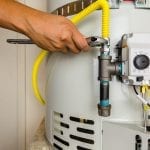Easy Ways to Maintain Your Home's Hot Water System Properly
Easy Ways to Maintain Your Home's Hot Water System Properly
Blog Article
What are your thoughts about Water Heater Maintenance Tips You Can't Afford to Forget?

Warm water is crucial for daily convenience, whether it's for a revitalizing shower or cleaning dishes. To guarantee your hot water system runs efficiently and lasts much longer, routine maintenance is key. This article provides sensible ideas and insights on how to keep your home's warm water system to avoid disruptions and costly fixings.
Introduction
Maintaining your home's warm water system may seem challenging, however with a few simple actions, you can ensure it runs smoothly for several years to find. This overview covers everything from comprehending your warm water system to do it yourself maintenance ideas and knowing when to employ professional aid.
Relevance of Preserving Your Hot Water System
Normal maintenance not just prolongs the life expectancy of your hot water system yet additionally ensures it runs efficiently. Overlooking maintenance can bring about reduced efficiency, greater energy expenses, and also premature failing of the system.
Signs Your Warm Water System Needs Upkeep
Understanding when your hot water system requires attention can prevent major problems. Look out for indicators such as inconsistent water temperature level, weird noises from the heating system, or rusty water.
Comprehending Your Warm Water System
Before diving right into maintenance tasks, it's handy to comprehend the standard elements of your warm water system. Usually, this consists of the hot water heater itself, pipes, anode rods, and temperature controls.
Month-to-month Upkeep Tasks
Regular regular monthly checks can assist capture small concerns before they rise.
Purging the Water Heater
Flushing your water heater removes sediment build-up, enhancing performance and prolonging its life.
Monitoring and Replacing Anode Rods
Anode rods stop deterioration inside the container. Checking and changing them when broken is crucial.
Inspecting and Changing Temperature Settings
Changing the temperature level setups makes certain optimum efficiency and safety and security.
Do It Yourself Tips for Maintenance
You can carry out several maintenance tasks on your own to keep your hot water system in top condition.
Looking for Leakages
On a regular basis inspect pipes and links for leakages, as these can cause water damages and higher bills.
Testing Pressure Relief Valves
Examining the stress safety valve ensures it functions correctly and avoids extreme stress build-up.
Shielding Pipelines
Protecting warm water pipelines minimizes warm loss and can save energy.
When to Call a Professional
While DIY maintenance is helpful, some concerns require expert expertise.
Complex Issues Calling For Expert Help
Instances include major leakages, electric issues, or if your water heater is constantly underperforming.
Regular Expert Upkeep Benefits
Specialist upkeep can consist of comprehensive inspections, tune-ups, and guaranteeing compliance with safety criteria.
Final thought
Regular upkeep of your home's warm water system is necessary for performance, durability, and expense savings. By complying with these tips and knowing when to look for specialist assistance, you can make certain a trustworthy supply of hot water without unexpected interruptions.
How to Maintain an Instant Hot Water Heater
Before tinkering with your hot water heater, make sure that it’s not powered on. You also have to turn off the main circuit breaker and shut off the main gas line to prevent accidents. Also turn off the water valves connected to your unit to prevent water from flowing into and out of the appliance. 2. When you’re done, you have to detach the purge valves’ caps. These look like the letter “T†and are situated on either side of the water valves. Doing so will release any pressure that has accumulated inside the valves while at the same time avoid hot water from shooting out and burning your skin. 3. When the purge valves’ caps are removed, you have to connect your hosing lines to the valves. Your unit should have come with three hoses but if it didn’t, you can purchase these things from any hardware or home repair shops. You can also get them from retail stores that sell water heating systems. Read the user’s manual and follow it to complete this task properly. When the hosing lines are connected, open the purge port’s valves. 4. You should never use harsh chemical cleaners or solutions when cleaning your unit. Make use of white vinegar instead. It should be undiluted and you’ll probably use about 2 gallons. 5. Now flush your water heater. This task should probably take about 40 minutes. We can’t give you specific directions for this because the procedure is carried out depending on the type, model and brand of your heater. With that being said, refer to the user’s manual. 6. When you’re done draining the unit, you have to turn off the purge port valves again. Remove the hosing lines that you earlier installed on each of the water valves. Put the valve caps (purge port) back in their respective places and be very careful so as not to damage the rubber discs that are found inside these caps. 7. Now that everything’s back in place, check your user’s manual again to find out how to reactivate your water heating system. 8. Once it is working, turn one of your hot water faucets on just to let air pass through the heater’s water supply pipes. Leave the tap on until water flows smoothly out of it. https://www.orrplumbing.com/blog/2014/september/how-to-maintain-an-instant-hot-water-heater/

As a passionate person who reads about Tips on Maintaining a Water Heater, I figured sharing that chunk was a good thing. Sharing is caring. Who knows, you will be doing someone a favor. Thank you so much for your time invested reading it.
Source Report this page